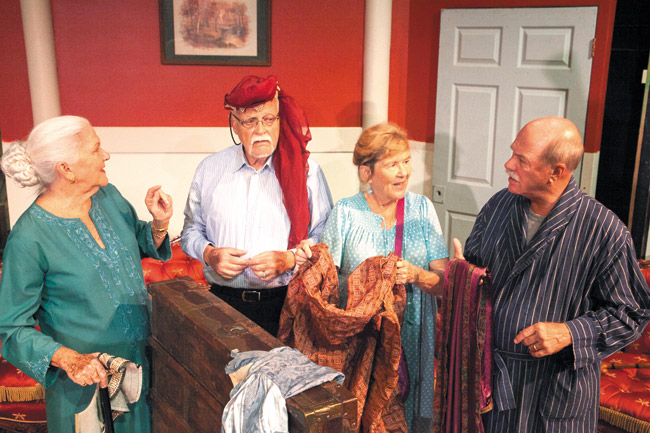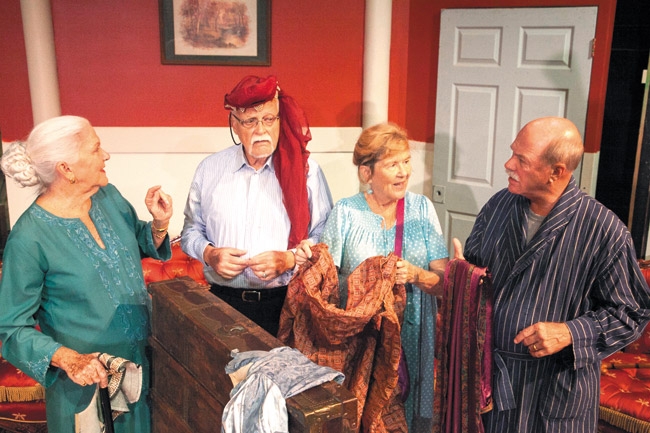Bygone Art: Foundry Patterns
Hello, industrial East Coast of a century past. Stand Up Eight’s unique art installation “Before the Before” by Dineh Moghdam Davis offers a rare visit to an era that produced complex metal casting for machinery parts.
“A foundry is a factory that produces metal castings,” says Iranian-born Davis, a retired UH communication professor specializing in culture and creativity. “The patterns currently on display were intended for the sand-casting method of mold-making and are between 70 and 100 years old.”
mw-art-112713-quartet
The wooden foundry patterns are the negative counterparts to metal assembly pieces used in serial production. A compressed sand and oil mix was pressed onto the patterns. Once the pattern was removed from the wood plate, molten metal was poured into the sand mold.
“In the mid-1970s, I watched thousands of beautifully crafted wooden casting patterns get hauled to landfills where they would be bulldozed over,” recalls Davis. “This was a time that the steel industry was gradually shifting off-shore from its home base in and around Pittsburgh. Many of these patterns were well over 50 years old then and had gone unclaimed by their original owners.”
Recognizing their aesthetic worth, Davis – who at the time co-owned and operated the Davis Blacksmith Shop, specializing in ironwork for furniture, candlesticks, light fixtures and the like – literally sat in a dump truck for three days to salvage some of the less cumbersome, more attractive pieces, saving truckloads of the patterns.
Some of these pine, mahogany and oak pieces she assembled into furniture, others she hauled clear across the country, hoping to one day use her artistic sense to give the found art new life.
“Nearly 40 years and four moves later, from Pennsylvania, twice through Vermont, south to Massachusetts and ultimately thousands of miles west to Hawaii, I am once again refinishing and reworking some of these patterns to share with those who may appreciate the now nearly extinct and highly labor-intensive craft of wood pattern-making,” says Davis, whose travel-inspired photo and art exhibits have shown at various galleries around the island.
Today, the public has a chance to view the wood patterned into odd shapes and full of notches, holes, bumps and handles. The antique red, black and multi-tones of brown paint and lacquer that have stained the pieces through the casting process are attractive unto themselves, inviting a bygone historical period to grip your imagination.
BEFORE THE BEFORE
There were siblings.
Twins, in fact; At times triplets.
Tall and short
Black, red, orange, silver, and plain Mahogany.
Some leaned into curves Many strayed into straight. Every dimension a measured goal.
Some wore their patina well Leather armor intact,
Marching arm in arm with me
As their savior captain.
Bad luck followed others into the abyss of a Pittsburgh landfill,
A defeated, beleaguered platoon of handcrafts gone.
A nation oblivious to their makers
And the made.
Age did not grace them all, Nor the whims of their new owner.
Before the after
There was the woodworker’s hand
Gentle, precise, mindful. Then came trial by fire.
At last, their destiny fulfilled.
Calm seclusion.
Then chaos.
Families torn asunder.
Move after move.
Rest after restless rest.
Years in captivity,
Now set free.
After the before.
– Dineh (2013)
the TICKET stub
BEFORE THE BEFORE
When: Wednesday-Sunday, through Dec. 21
Where: Stand Up Eight (1113 S. King St.)
More Info:standupeightfurniture.com
ALSO SHOWING
Aging With Pluck
Quartet belongs in the class of British features where a group of youthful elderly escape to the countryside for some witty jousting, and throw in some lightly off-color humor for good measure. This Manoa Valley Theatre selection directed by David Farmer exists slightly outside the genre, as the setting has been transposed to a home for aging opera singers (the play’s movie adaptation last year was Dustin Hoffman’s directorial debut in film).
Three retired opera singers gather in an expansive drawing room with the requisite veranda and rose garden – eliciting a breezy, estate setting – where the still vivacious Wilf (Howard Bishop) lusts after the forgetful Cecily (Jan McGrath), whose declining mental health finds her fancying that each person she meets has just returned from Karachi. Reg (Jim Tharp) is a gentlemanly sort, until he spots the nurse whom he believes has been depriving him of marmalade. Jo Pruden enters the picture as Jean, former star of stars, who isn’t taking aging quite as gracefully as her housemates. She fiercely denounces their plan to sing together as the final act at the house’s party of the year.
Pockets of inspiration throughout and a cup-half-full approach to aging keep Quartet uplifting despite the serious contemplations on losing one’s physical and mental health, and indeed, one’s lifelong talents. Quartet (through Dec. 1, 988-6131, manoavalleytheatre.com) may have a tough time competing with some of the splashier fare in theaters as its rhythm necessitates settling into a less boisterous mind frame. Of note is that the play has nothing to do with music per se. And, as one theater guest noted, “If you’re used to working with the elderly, like I am, the play is hilarious. I laughed the whole time.” If you’re not, then the foibles and deterioration of the characters’ faculties lend some sobriety to the production.







